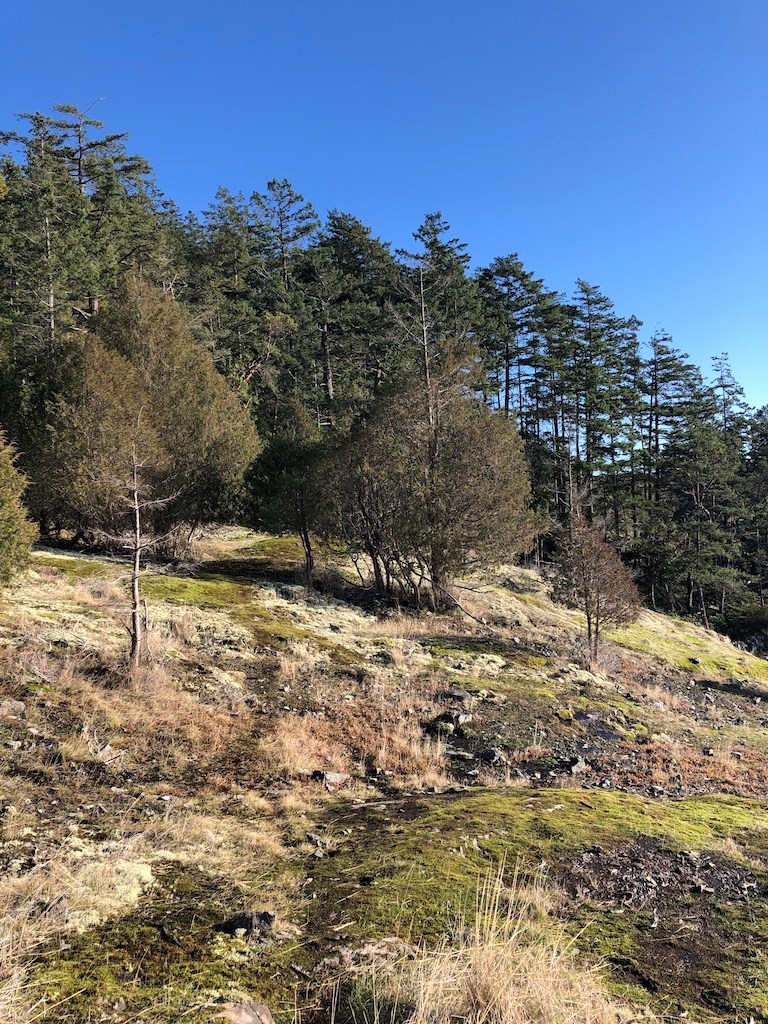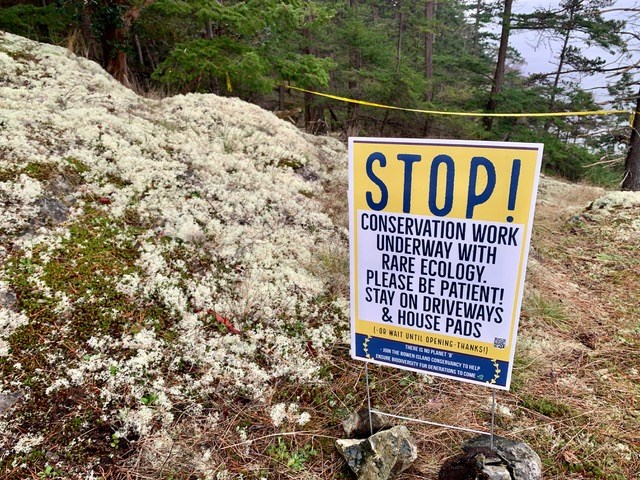The Bowen Island Conservancy is starting the development of its heavily anticipated new park on the Cape. At 12.9 hectares (32 acres), it preserves a large area between Cape Dr. and the ocean on the southern end of Cape Roger Curtis.
Completion is projected for Spring of 2021 and the conservancy encourages everyone to wait until then before visiting, both for visitor safety, as well as the protection of vulnerable features in the park.
By the spring, many trails will lead visitors through the forested park to gorgeous ocean viewpoints off bedrock terraces and down to the water. Staying on the trails is key within this special green space, which is home to several unique plant species that need protection.
.jpg;w=960) Columbia Rock Shield lichen(Xanthoparmelia cumberlandia). This amazing lichen clings to rocks and glows (phosphoresces) under UV light. By Kiley Redhead
Columbia Rock Shield lichen(Xanthoparmelia cumberlandia). This amazing lichen clings to rocks and glows (phosphoresces) under UV light. By Kiley Redhead
Much of the park consists of sensitive coastal bluff ecosystems. These are steep areas with exposed rock and very little soil. It may look like there is “nothing there,” and they may call you to wander through them, admiring the ocean. However, human activity can cause great damage.
Despite the dearth of soil, plucky species put down their roots there and cling to life. Mosses and lichens, in particular, are fragile and easily crushed. The few small trees that grow on these bluffs are surprisingly old but do not need much disturbance to uproot them. The lack of soil slows their growth and turns them into bonsai-like versions of their species. For example, a 30 cm (12 inch) diameter Douglas fir growing on the bluff was aged at 140 years!
 Lack of soil on the bluffs slows growth and turns trees into bonsai-like versions of their species. The seemingly "bare" rocks are covered in mosses and lichens. By Kiley Redhead
Lack of soil on the bluffs slows growth and turns trees into bonsai-like versions of their species. The seemingly "bare" rocks are covered in mosses and lichens. By Kiley Redhead
The bluffs themselves are also vulnerable to erosion by even the most carefully planted shoe. The mosses and small plants – along with their meagre layer of soil and associated loose rocks – can easily slough off into the sea, taking unsuspecting visitors along with them. Most of the beach areas along the water actually consist of debris that has fallen off the bluffs.
But this is not just about human safety. Even sitting still on the bluffs to enjoy a picnic can cause damage. Invasive species, like grasses and burdock, can be easily carried on our shoes and clothing, and chemicals like sunscreen and insect repellent may disrupt the delicate balance of these sparsely populated ecosystems. Even dropped food can attract species that wouldn’t normally thrive on the bluffs and push out native species. It’s better to stick to the benches and picnic tables that will be installed at various lookouts.
The Conservancy mandate “to protect and preserve the natural environment of this island” has been at the forefront throughout the purchase and development of this scenic park area. They are taking great care to balance visitor enjoyment with education and preservation of this special space.
.jpg;w=960) Coastal Reindeer lichen (Cladina portentosa). There are many species of Cladina along the coast. They grow on the ground and on rocks. . By Bob Turner
Coastal Reindeer lichen (Cladina portentosa). There are many species of Cladina along the coast. They grow on the ground and on rocks. . By Bob Turner
Now we can all do our part by waiting until spring to visit, respecting signage, and sticking to the paths and designated lookouts and picnic areas. Let’s make this a community park that will live on in all its glory for generations to come.



